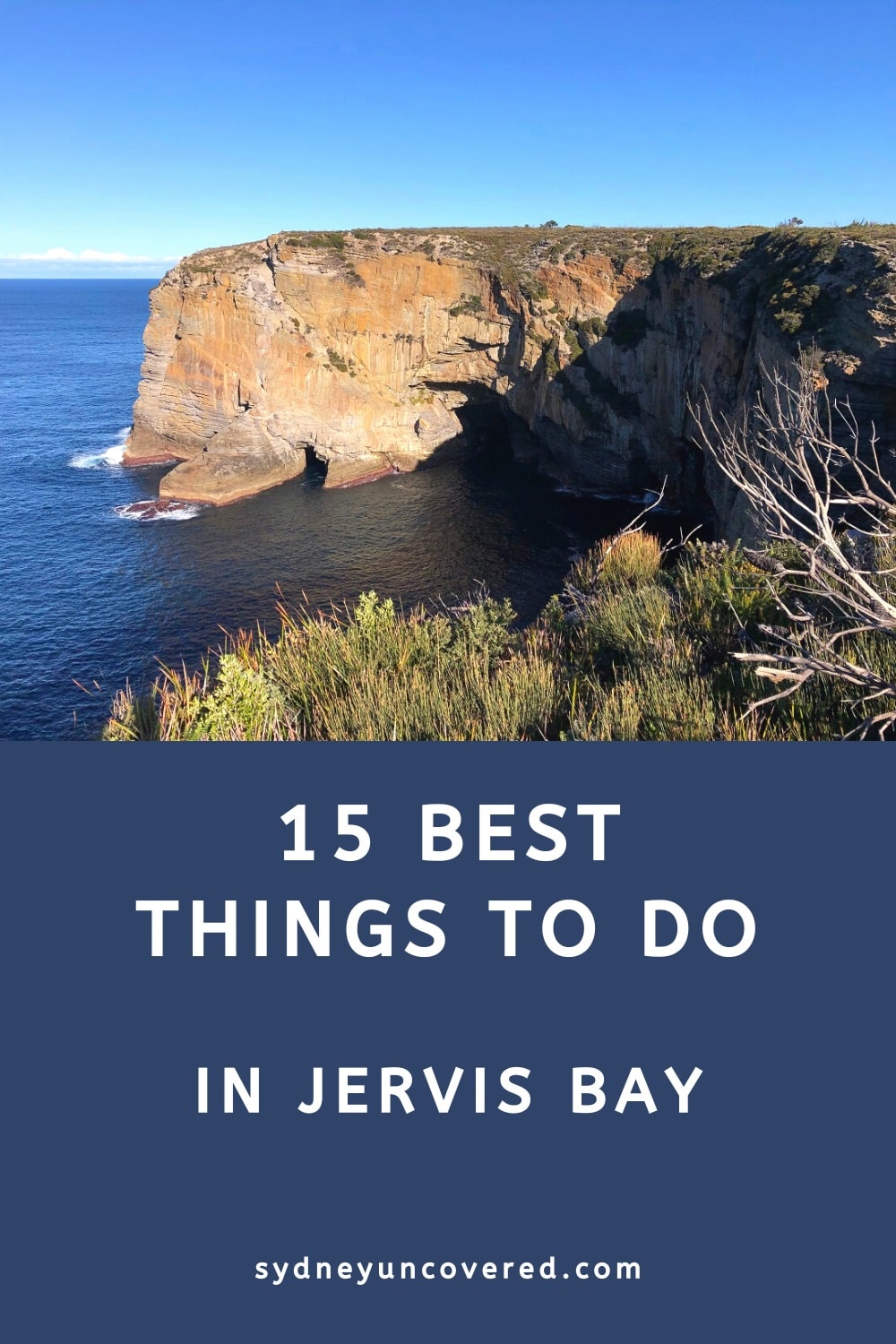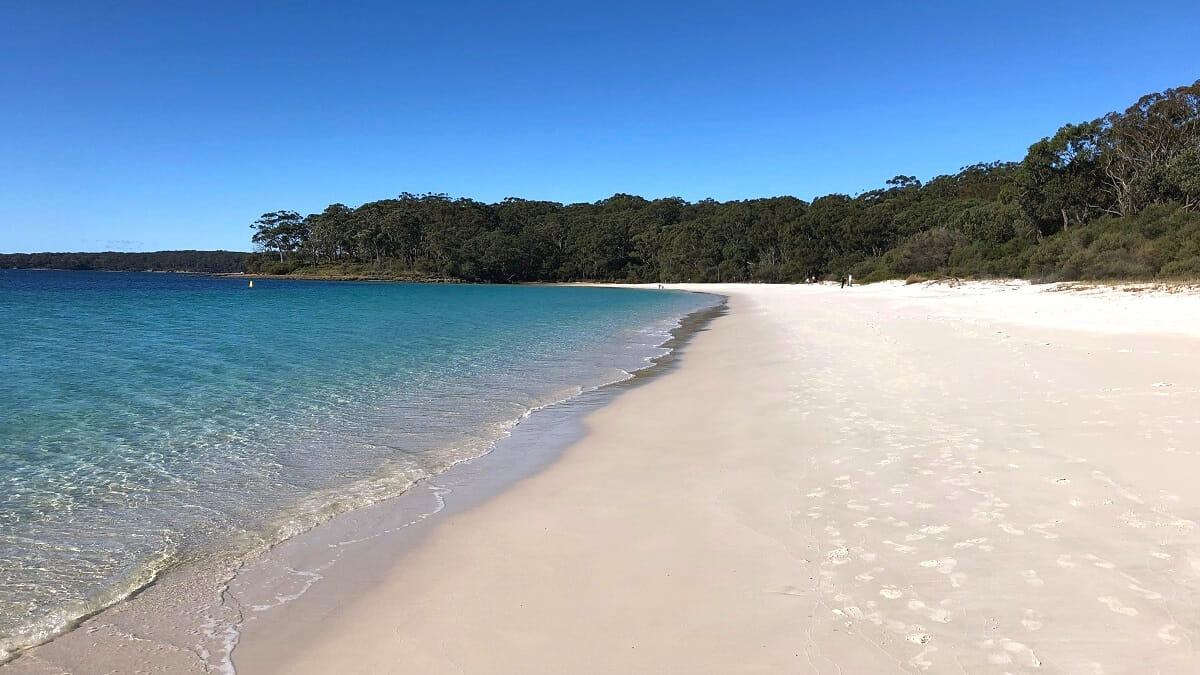Last updated: April 5, 2024
Find the best things to do in Jervis Bay, from scenic coastal tracks and lookouts to historic lighthouses and unique rock formations.
The name Jervis Bay refers to a village as well as to a large oceanic bay on the South Coast of New South Wales.
It has long been one of the most popular holiday destinations for Sydney-siders, with lots of beautiful beaches and national parks nearby to explore.
Below is our top 15 attractions and activities in and around Jervis Bay, listed in a logical geographical order to make it easier to plan your trip to Jervis Bay.
1. Jervis Bay Maritime Museum
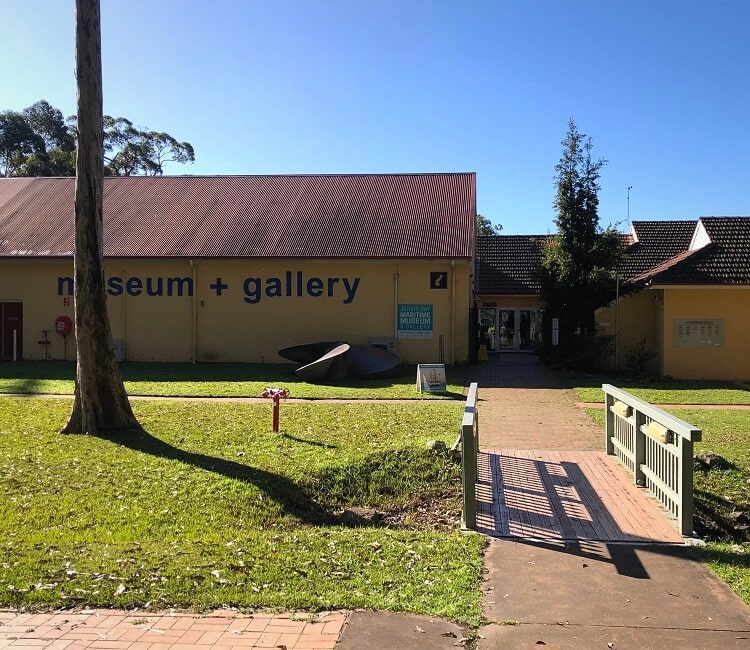
The Jervis Bay Maritime Museum is a small but rich museum that features a collection of maritime artefacts and navigational and surveying instruments.
The key attraction of the museum is the historic Lady Denman, a ferry built in 1911 that is now the only surviving wooden Sydney Harbour ferry.
It’s also worth venturing outside to visit the gardens, the fish-feeding pond, and the historic boathouse behind the main building.
The museum is located on Woollamia Road in Huskisson and enjoys a waterfront location on Currambene Creek in a beautiful bush setting just outside the town centre.
2. Jervis Bay Mangrove Boardwalk
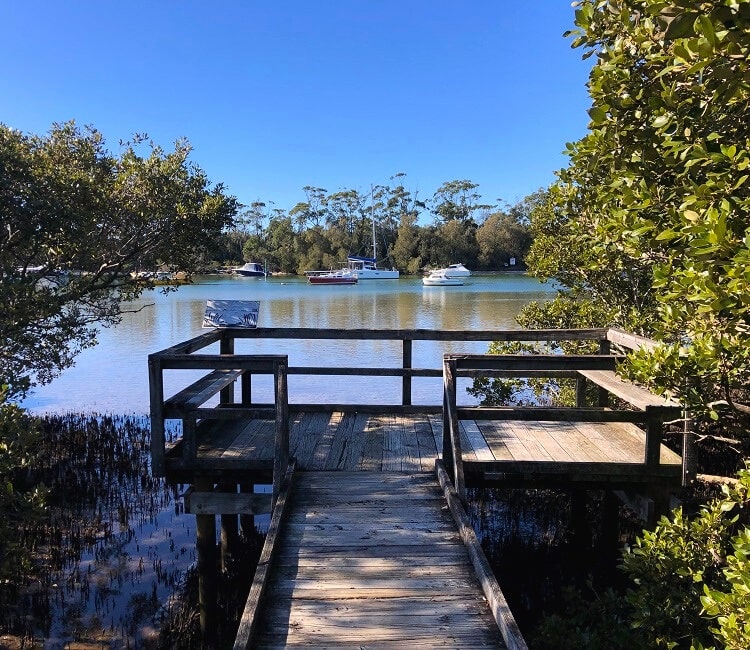
The Jervis Bay Mangrove Boardwalk is located just behind the gardens of the maritime museum. Look for the signs to find the start of the walk.
This 1.4 km long boardwalk is a family-friendly, wheelchair-accessible stroll through and above the mangrove area between the museum and Currambene Creek.
The muddy surface underneath the wooden boardwalk is full of life of all shapes and sizes. The small crabs that you will see moving around are particularly cute to watch.
There are lots of information boards placed along the walk with interesting facts about the area and the wildlife living there.
3. Huskisson Village
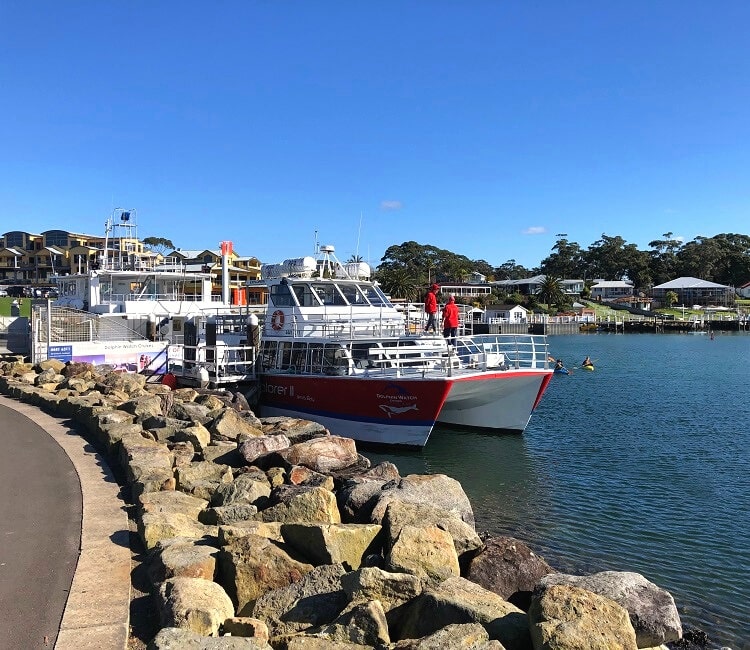
Huskisson is the most popular town in the Jervis Bay area, with many cafes, restaurants, pubs, beaches, shops, and other amenities to take advantage of.
The town is located in the middle of the bay’s coastline, right where Currambene Creek meets the ocean. Huskisson is also where most dolphin, whale watching, and river cruises depart from.
Don’t forget to go for a wander on the walking path that circles around Voyager Park from the ferry to the Huskisson Sea Pool.
If you’re on a camping trip, Huskisson might also be the best place to stock up on supplies and groceries. Alternatively, head to Vincentia further south for more shops and eateries.
4. Kayaking
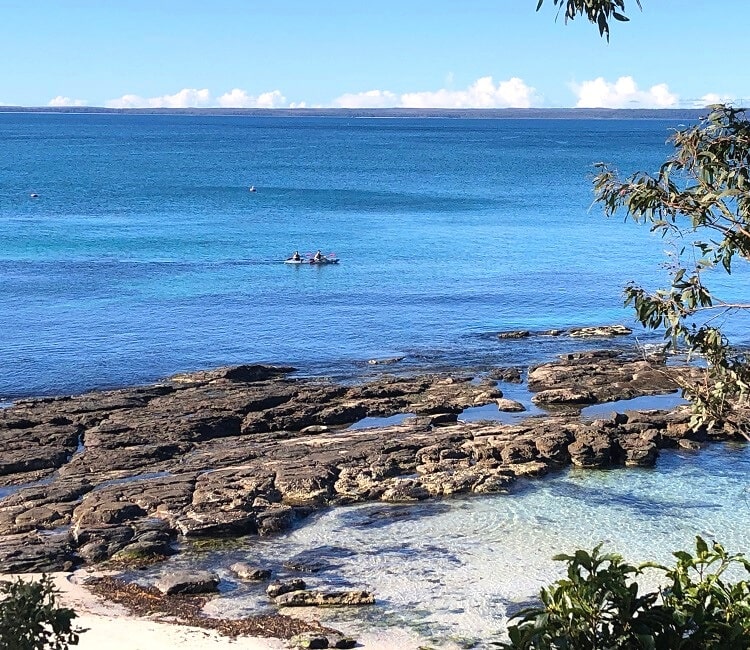
The ocean water at Jervis Bay is usually quite calm, and with so many beautiful white beaches scattered along the coast, kayaking is one of the best ways to take in the beauty of this area.
In Huskisson, you can also kayak along Currambene Creek, where the water is calm, and the views of the mangroves and wetlands are lovely.
If you don’t have a kayak, there are places in Huskisson where you can rent a kayak for a few hours or a whole day, or otherwise, go on an organised tour.
Kayaking is just one of many water sports you can do in this beautiful part of New South Wales. Jervis Bay is also the perfect destination for standup paddleboarding, snorkelling, scuba diving, and sailing.
5. Dolphin Cruise
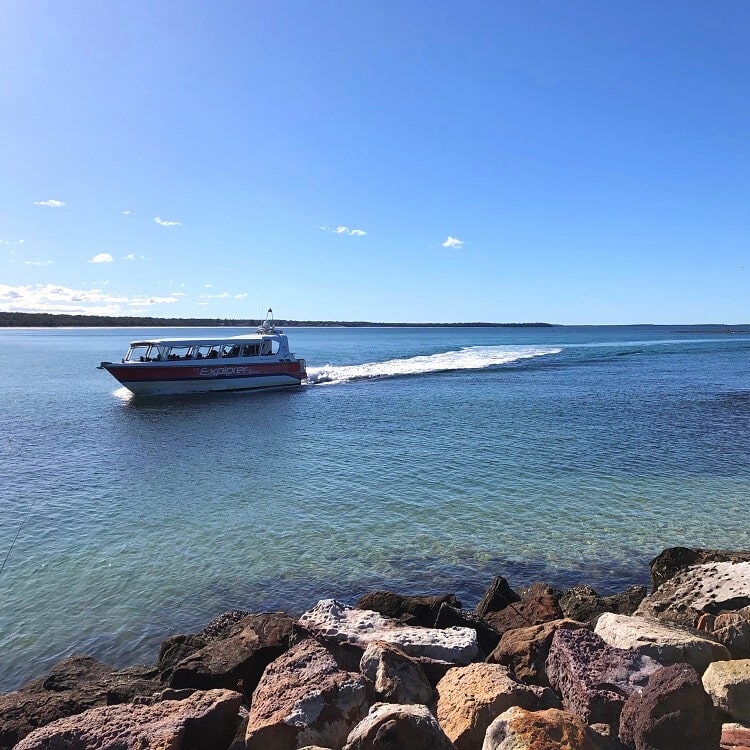
A short holiday break in Jervis Bay is not complete without doing a cruise into the bay to see the dolphins, or so they say.
While there is never a 100% guarantee that you will see dolphins from close by, you’re much more likely going to see them from a boat than from the shore.
Besides spotting dolphins, a cruise also has educational value as you will learn more about Jervis Bay from the tour guide, not to mention the fantastic ocean views you get to take in.
Recommend tour: 1.5-hour Jervis Bay dolphin cruise.
6. Whale Watching Cruise
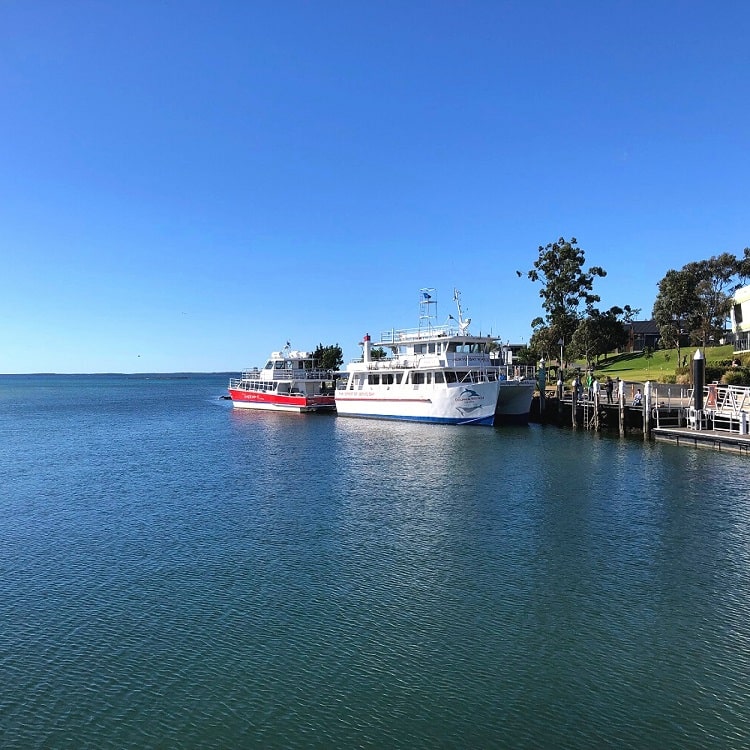
Another option is a whale-watching cruise, although you will need to do this during the migration season from May to November.
Witnessing the beauty of migrating humpback whales is quite a unique experience, even more so in the beautiful scenery of Jervis Bay.
A whale-watching cruise will typically also include sightseeing, so you will get to see beautiful cliffs and ancient sea caves from close by.
Recommend tour: 2-hour Jervis Bay whale watching cruise.
7. White Sands Walk
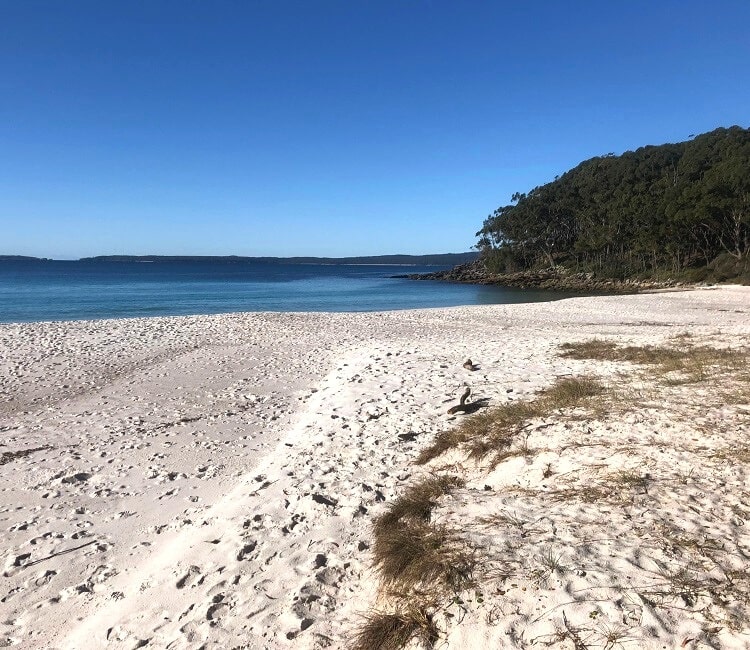
An excellent way to experience the beauty of the many white sandy beaches along Jervis Bay’s coast is by doing the 2.5 km White Sands Walk.
This family-friendly walking trail starts at the Vincentia Sailing Club at Plantation Point and ends at Chinamans Beach, just north of Hyams Beach.
The walk passes Nelson Beach, Blenheim Beach, Greenfield Beach, and Chinamans Beach, with plenty of opportunities to go for a swim if the weather is nice.
Each beach you will see on this walk has that bright white sand and beautifully clear turquoise water. Most of the walk is on a well-maintained path just behind the beaches.
8. Hyams Beach
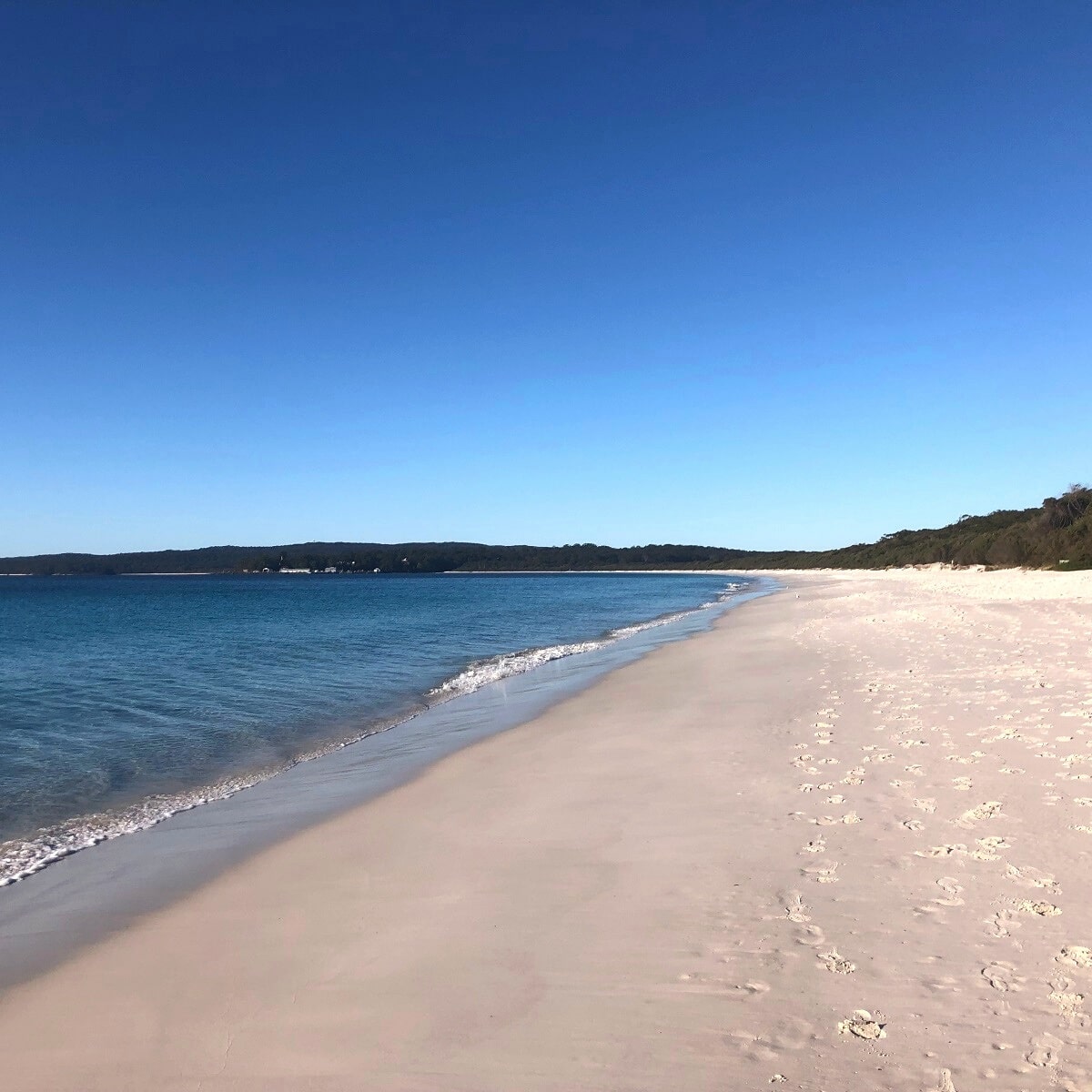
Hyams Beach is perhaps the most popular and most well-known beach in the Jervis Bay area, and for good reasons.
If you’ve never been there, you will be in awe of the sheer beauty of this very long beach, which, supposedly, has the whitest sand in Australia.
Hyams Beach is located just north of the Jervis Bay Territory and is accessible via Naval College Road, followed by Booderee Avenue.
If you enjoy a relaxing day at the beach, don’t just focus on Hyams Beach. There are plenty of other great beaches in Jervis Bay, such as Nelson Beach, Collingwood Beach, and Huskisson Beach.
9. Hole in the Wall
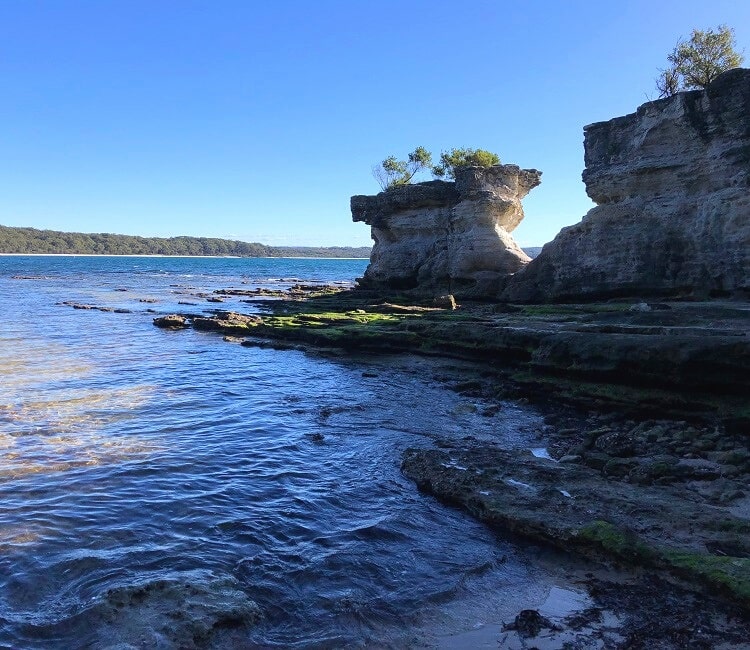
The Hole in the Wall is the first attraction on this list of things to do in Jervis Bay that is located in Booderee National Park.
This intriguing rock formation is essentially a large U-shaped hole in a sandstone rock wall. It’s a great spot for photographers, especially at sunrise.
The walking trail to the beach is approximately 500 metres long, and once at the beach, you have to walk another few hundred metres to get to the rock formation.
To find the start of the walking trail to the Hole in the Wall, look for the signpost on the side of Jervis Bay Rd (see map location).
10. Governor Head Lookout
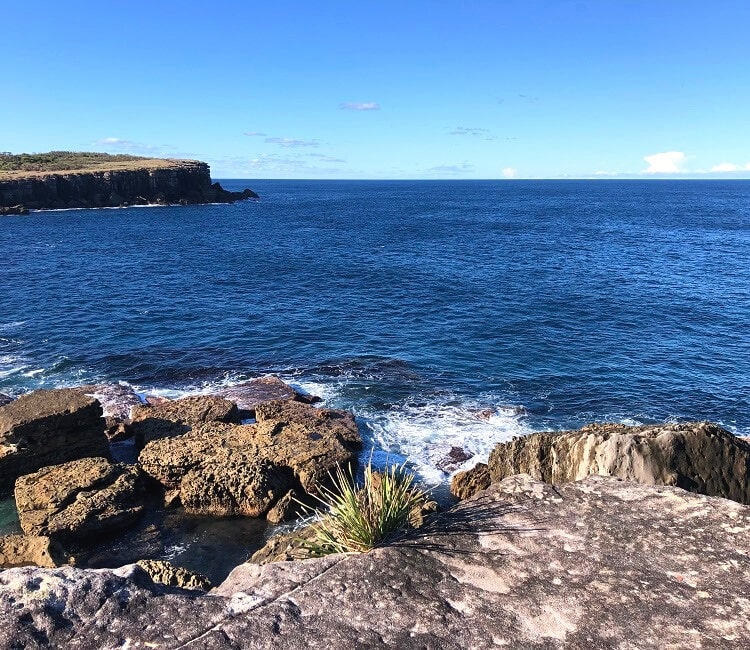
From the Hole in the Wall, continue driving on Jervis Bay Rd to the Murrays Beach carpark, where you will find the 1 km walking trail to the Governor Head Lookout.
The views from the lookout to Bowen Island are fantastic, and you may even spot some whales or dolphins if you’re lucky.
Bowen Island is home to a community of approximately 5,000 small penguins that continuously come to and go off the island.
It’s unlikely you will see any penguins, but the island and ocean views are satisfying enough, especially on a windy day with big waves breaking against the headland and the island.
11. Ocean Cave Lookout
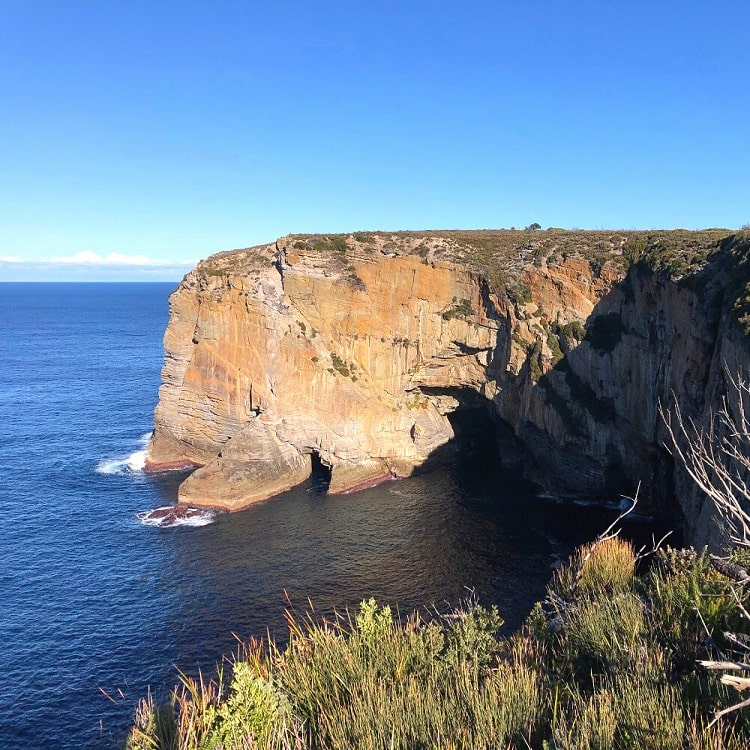
The Ocean Cave Lookout, otherwise known as the Devils Elbow, is perhaps even more impressive than the Governor Head Lookout.
To get there, continue on the same walking trail southbound for approximately 1.2 km until you see the dramatic cliffs like in our photo.
This is called the Ocean Cave Lookout because of the large caves at the bottom of the cliffs that tower 60 metres above the ocean.
When visiting this lookout, please stay well away from the cliff edge, especially on windy days, because there is no fencing.
12. Cape St George Lighthouse
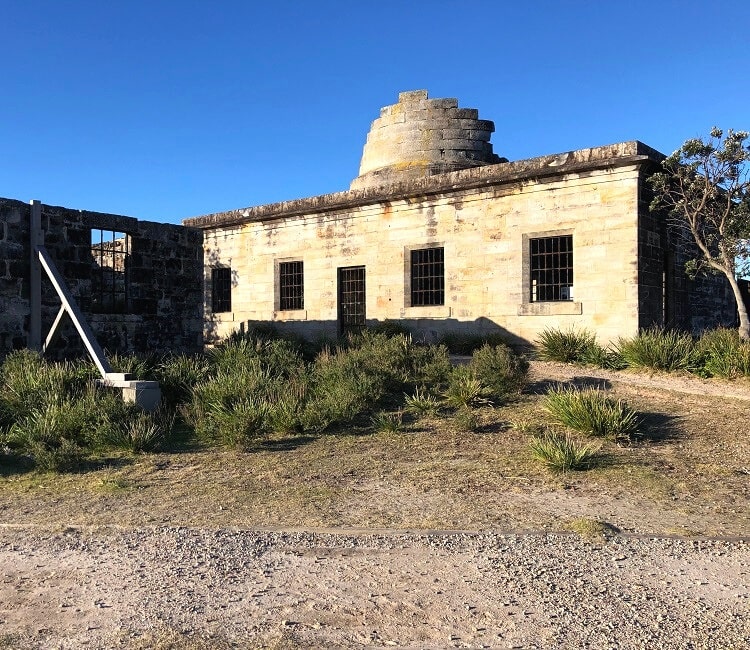
The next must-visit in Booderee National Park is the historic Cape St George Lighthouse, which looks a bit like a ruin from the Roman Empire.
The lighthouse was constructed in 1860 and was active only until 1889. The project was controversial from the start, with many questioning the suitability of the lighthouse’s location.
Many ships wrecked during the years the lighthouse was active, and it was eventually replaced by the Point Perpendicular Lighthouse on the north side of the bay (see further below).
Be sure to read the information boards as they will give you some insights into the fascinating history behind the Cape St George Lighthouse.
13. Cave Beach
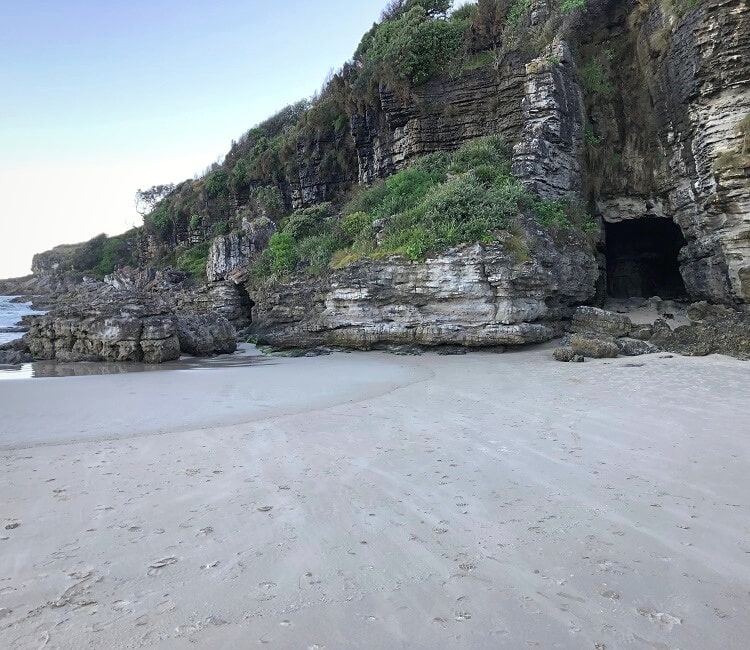
Cave Beach is one of the most remarkable beaches in Booderee National Park. The beach itself is pretty enough, but the large cave on the western end of the beach is incredibly fascinating.
The beach is quite small compared to most other beaches in the Jervis Bay area, and is suitable for swimming and bodyboarding. But the highlight, of course, is the cave that you can walk into.
Another fun attraction of this beach is the population of small kangaroos that like to hang out at the carpark and the picnic areas.
To find the beach, drive into Cave Beach Road off Jervis Bay Road and continue to the end, where you will find a large carpark. The Booderee Botanic Gardens are also located on Cave Beach Road, should you have extra time to spare.
14. Point Perpendicular Lighthouse
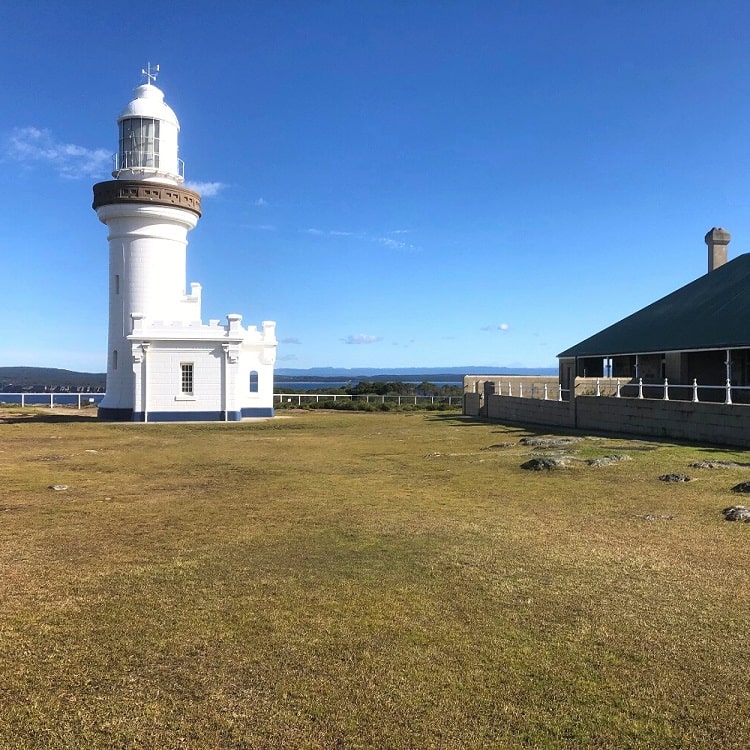
The Point Perpendicular Lighthouse is a working lighthouse that was built to replace the failed Cape St George Lighthouse further south.
To get there, you will need to travel to the Beecroft Peninsula on the northern side of Jervis Bay, which can be accessed via Currarong Road.
Point Perpendicular (with its lighthouse) is considered one of Jervis Bay’s most iconic landmarks. It was designed and built in 1898 as one of a series of stations along the NSW coast.
The lighthouse itself is an absolute beauty, but its setting atop the dramatic cliffs of the headland makes this a very special place to visit.
15. Outer Tubes
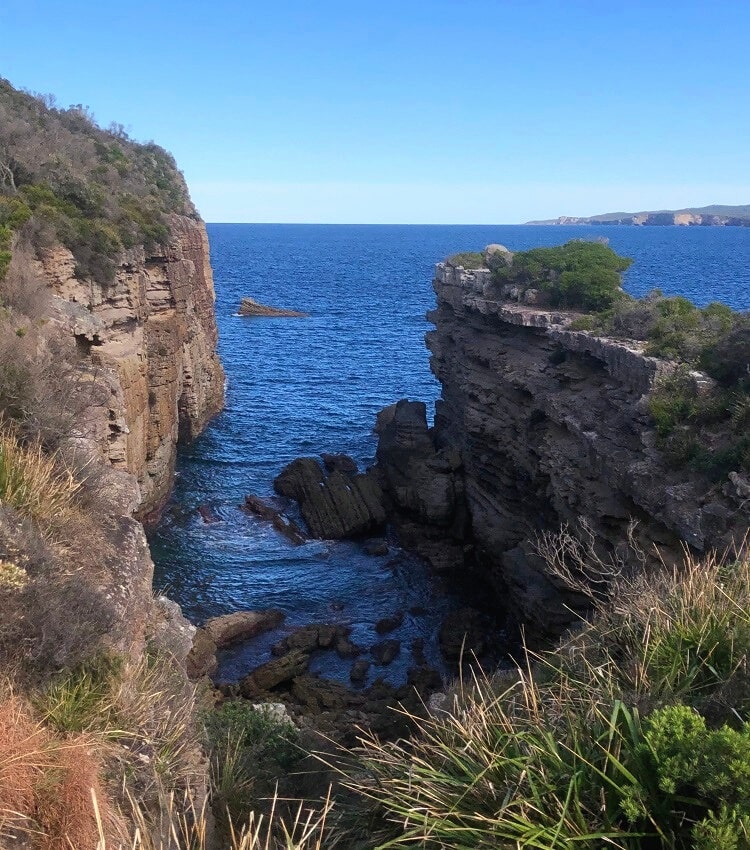
When visiting the Point Perpendicular Lighthouse, it’s a good idea to also do the walking trail to a rock formation called Outer Tubes.
You can find the start of that 2 km walking track at the lighthouse carpark. Even though the track is short, it is pretty steep and challenging at times, so it’s recommended to wear decent hiking shoes.
Outer Tubes is famous for its land-based fishing and is one of the few places in the world where pelagic fish such as marlin and tuna can be caught from the rocks.
The views of the rock formations are sensational, but care must be taken at all times, even more so on windy days.
Here are three great accommodation options in the area:
About Jervis Bay
The name Jervis Bay can refer to three things:
- The oceanic bay
- The Jervis Bay Territory
- The Jervis Bay village
The large oceanic bay that is Jervis Bay is bordered by the Beecroft Peninsula to the north, Booderee National Park to the south, and coastal villages such as Callala Beach, Huskisson, Vincentia, and Hyams Beach to the west.
Jervis Bay is also a village, located in the southwest corner of the bay. The village is part of the Jervis Bay Territory, a separate Commonwealth territory that was founded in 1915 to allow the federal government, residing in Canberra, to have jurisdiction over a coastal area.
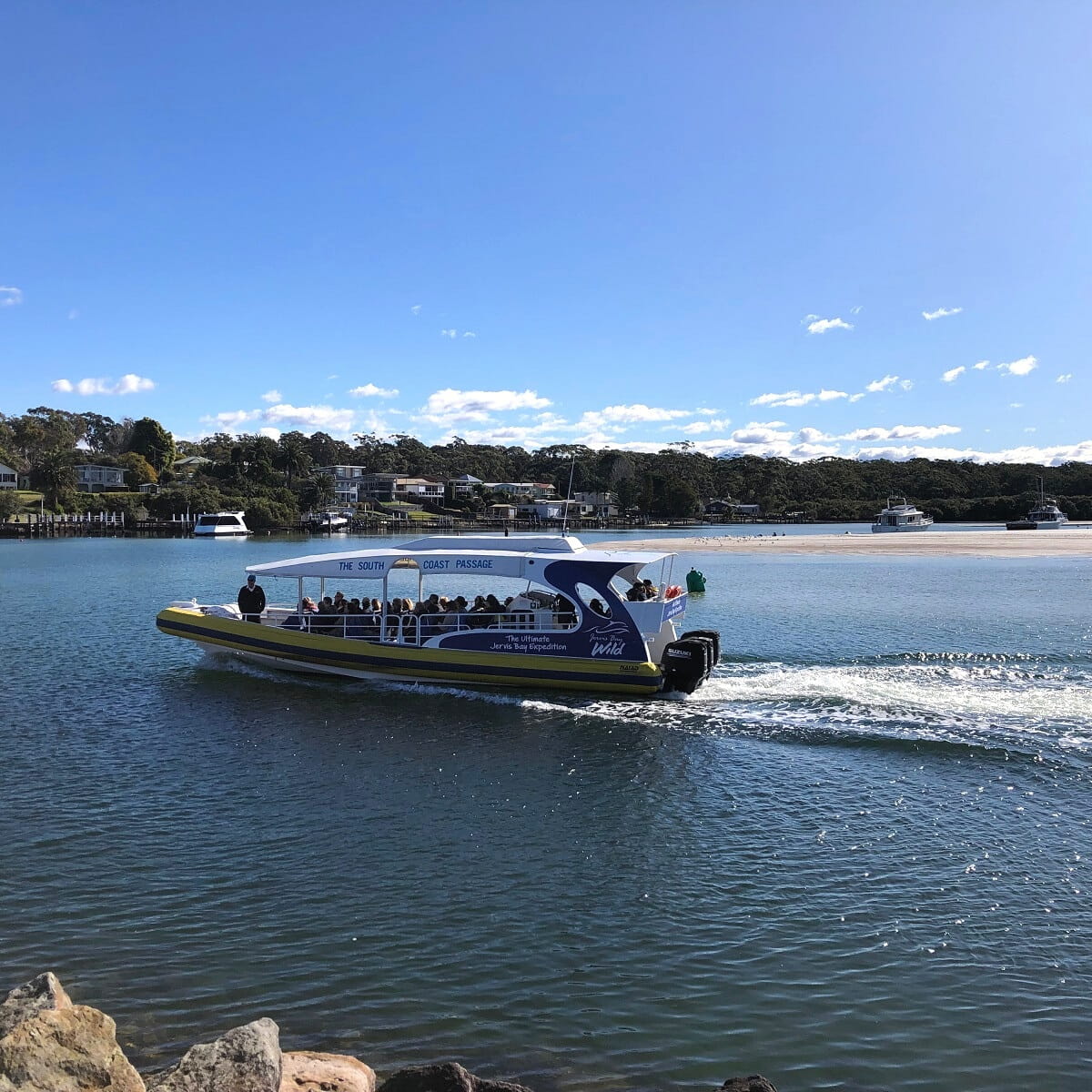
The Jervis Bay Territory (JBT) is technically not part of the Australian Capital Territory (ACT), but it is governed mainly under the laws of the ACT. Most of its residents (around 400) work in Defence and live either in Jervis Bay Village or Wreck Bay Village.
The Booderee National Park now covers most of the entire Jervis Bay Territory. The name Booderee means “bay of plenty” or “plenty of fish” in the local Aboriginal language. The local Aboriginal people of the NSW South Coast region are the Yuin people.
Accommodation Options
There are plenty of accommodation options in the greater Jervis Bay area, but it’s essential to book well ahead, especially during the summer months.
You can stay in a hotel, a motel, a caravan park, or otherwise go camping. You will find lots of great camping sites in Jervis Bay, such as:
How to Get There
It’s best to travel to Huskisson and the greater Jervis Bay area by car, although public transport is also possible.
1. Drive
Driving to the Jervis Bay area from Sydney is very easy. The drive to Huskisson takes between 2 and 3 hours, depending on where you live.
The easiest route is via the A1 Princes Highway and the M1 Pacific Motorway, past Royal National Park, Wollongong, Kiama, Bomaderry, and Nowra.
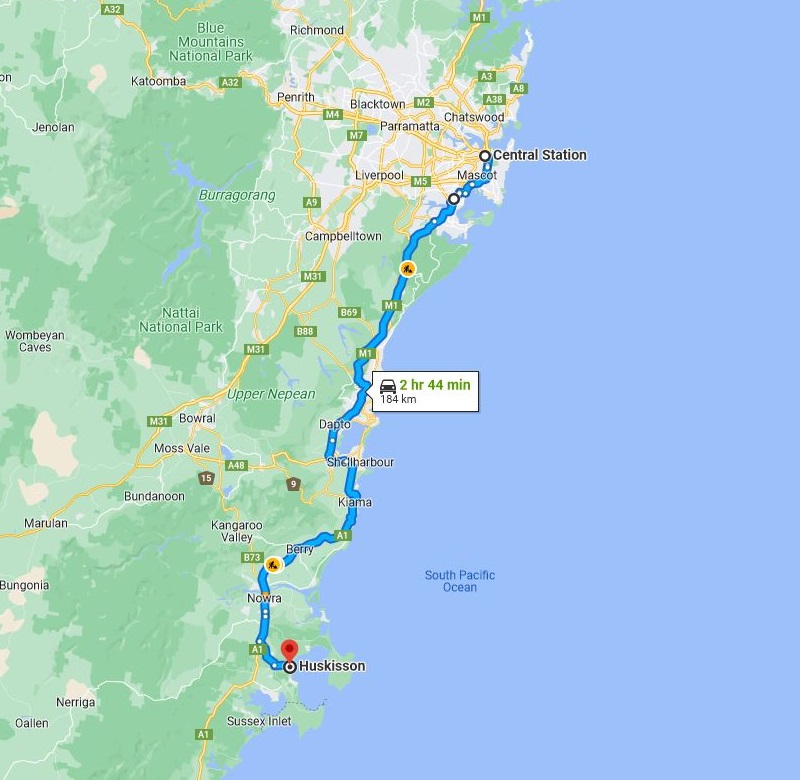
Alternatively, to bypass the busy South Sydney and Sutherland Shire areas (Rockdale, Sylvania, Kirrawee, Loftus), you can go via the M5 South Western Motorway, followed by the A6 to Heathcote.
2. Public Transport
Unfortunately, Jervis Bay is not the best place to visit by public transport. Nearby Nowra does have a train station, but travelling from there to the Jervis Bay area is challenging. Also, to visit all the popular attractions we’ve listed above, a car is going to be necessary.
If you do wish to travel by train and bus, Nowra Coaches offers bus services between Bomaderry, Nowra, Huskisson, Vincentia, and Hyams Beach.
Here are some more destination guides you might like:
